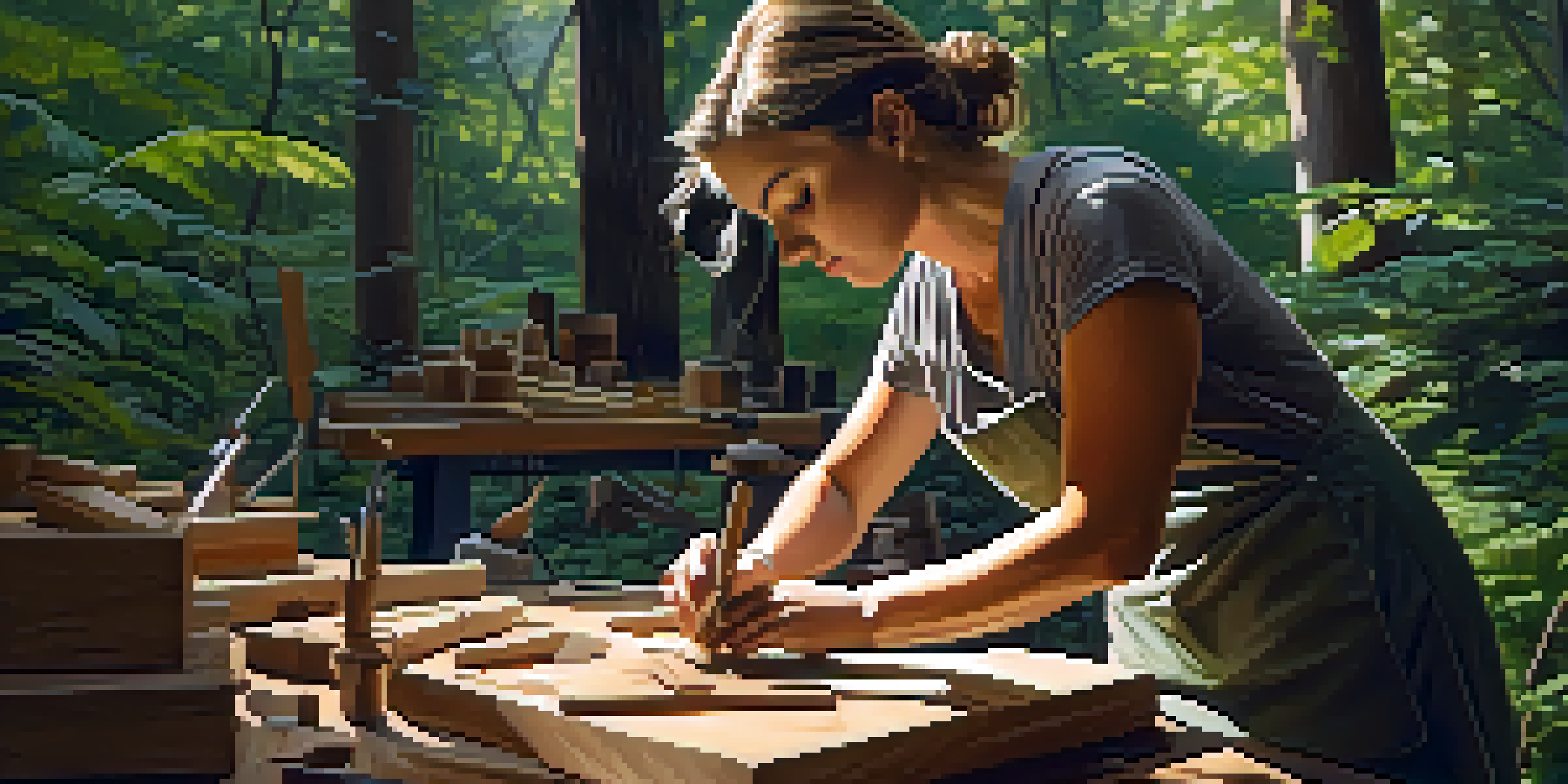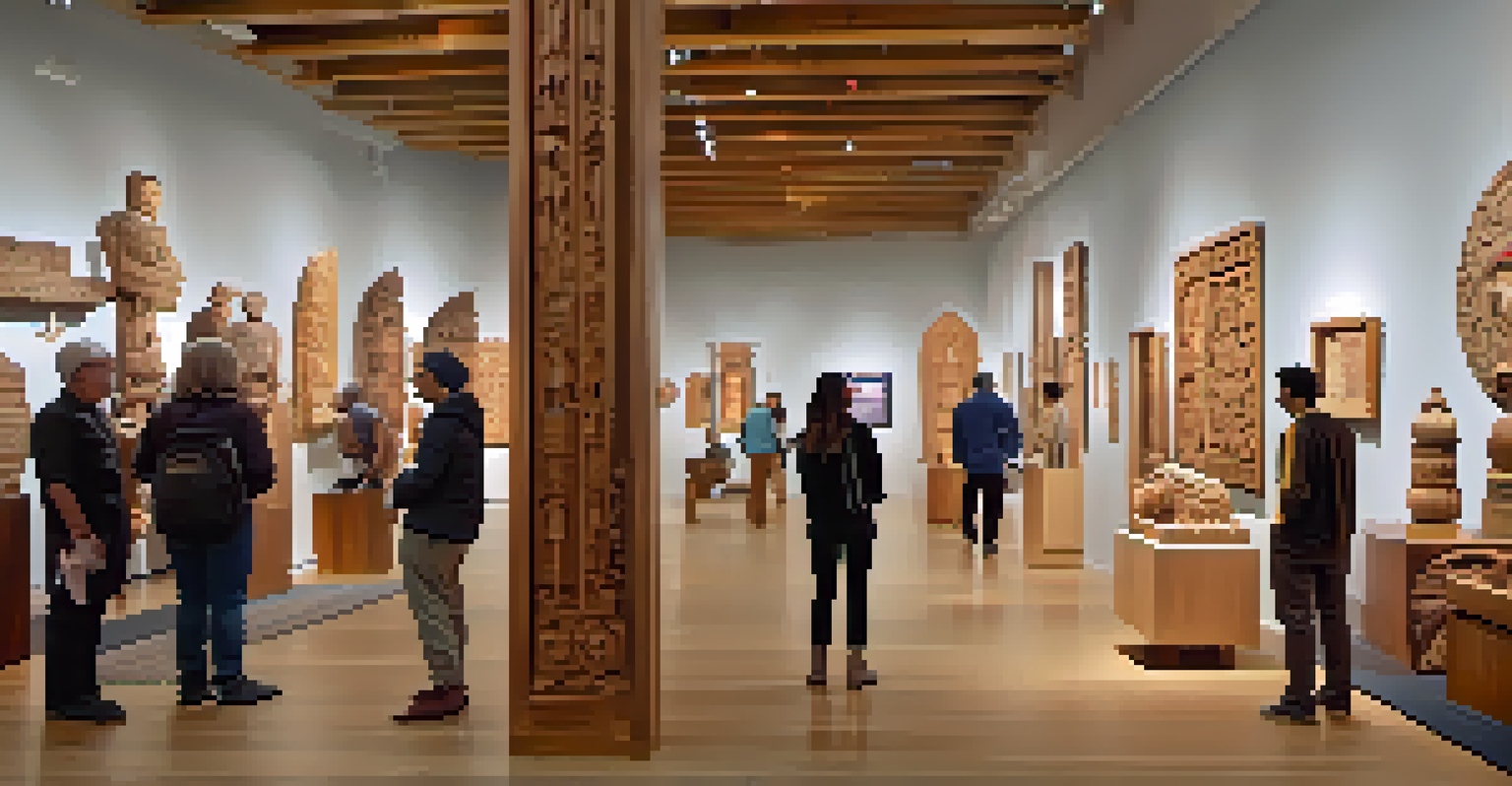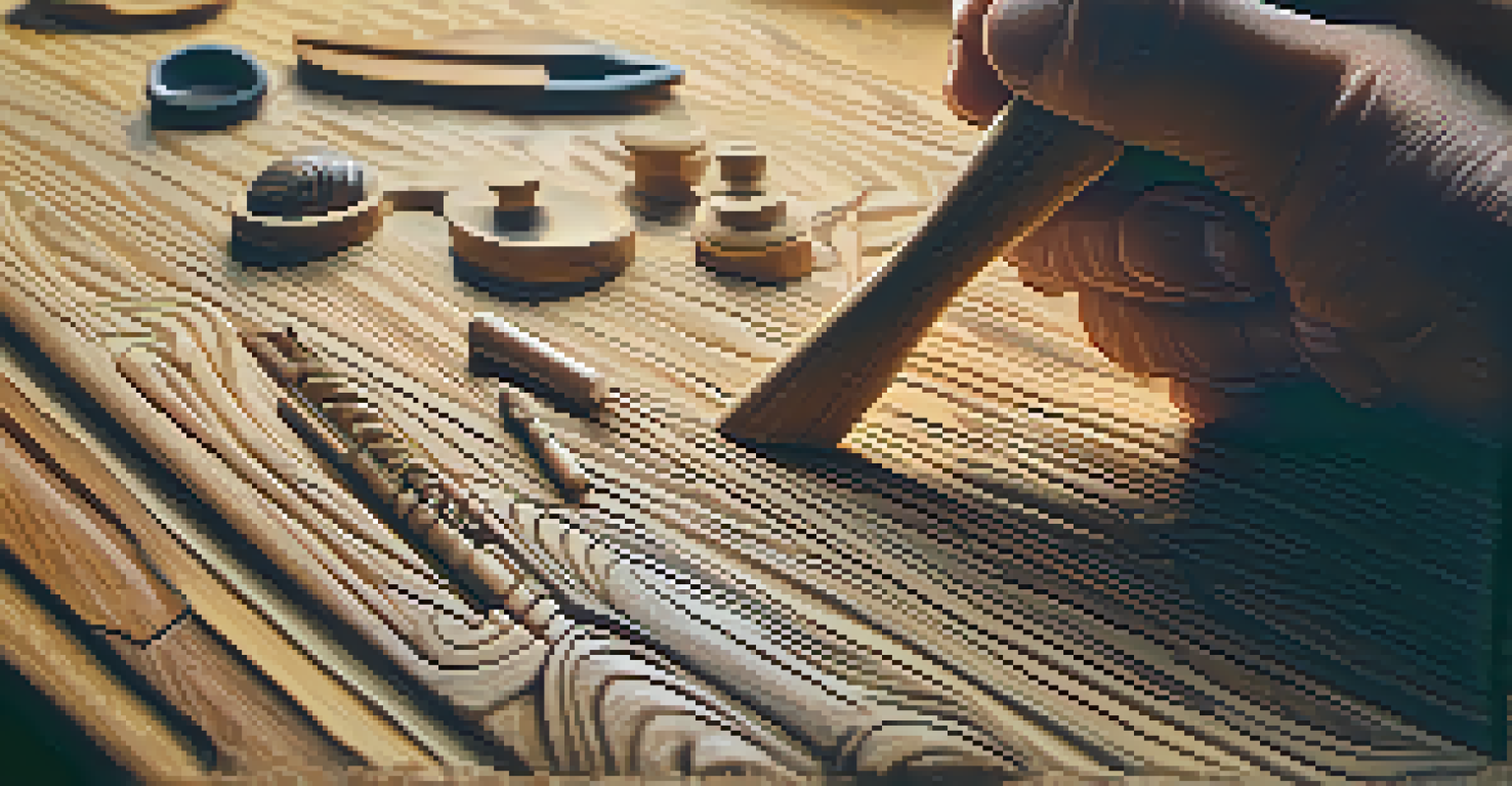The Impact of Gender on Carving Styles and Techniques

Understanding Gender in Artistic Expression
Gender plays a significant role in shaping artistic expression, influencing everything from style to subject matter. Artists often draw from their personal experiences and societal expectations, which can vary greatly between genders. For instance, male artists have traditionally been associated with bold, aggressive techniques, while female artists might lean towards more delicate and intricate styles. This differentiation highlights not just personal choice, but also cultural narratives that inform how we perceive and create art.
Art must be an integral part of the life of the people, a reflection of their values, dreams, and struggles.
Moreover, these artistic choices are often reinforced by social norms and expectations. For example, a male carver might feel pressure to produce large, robust pieces that demonstrate strength, while a female carver might be encouraged to create smaller, more detailed works. This dynamic can limit the scope of artistic expression and lead to a narrow understanding of what constitutes 'acceptable' art for each gender. As we explore the impact of gender, it's essential to consider how these influences manifest in carving techniques.
Ultimately, recognizing the nuanced relationship between gender and art opens up a broader conversation about inclusivity in the artistic community. By cultivating an environment where diverse voices can be heard, we can challenge existing stereotypes and expand the definitions of artistic excellence. This shift not only benefits individual artists, but it also enriches the art world as a whole.
Historical Perspectives on Gender and Carving
Historically, carving has been a male-dominated field, with many prominent carvers being men. This trend can be traced back to societal structures that limited women's participation in various art forms. Even today, many woodworking schools and workshops predominantly feature male students, which can perpetuate the cycle of gender bias in the craft. When examining the history of carving, it becomes clear that the contributions of female carvers have often been overlooked or undervalued.

However, as we delve into the past, we can uncover incredible stories of women who broke barriers in carving. For instance, some Indigenous cultures have long recognized the contributions of female carvers, who often used their skills to create ceremonial pieces or community art. These examples showcase the diverse range of styles and techniques that women have employed throughout history, despite the challenges they faced. Understanding this historical context allows us to appreciate the evolution of carving and the role gender has played.
Gender Shapes Artistic Expression
Gender influences artistic choices, styles, and techniques, reflecting both personal experiences and societal expectations.
By highlighting these stories, we not only honor the legacy of female carvers but also encourage a more equitable future. As we learn from the past, we can work towards a more inclusive art community that values contributions from all genders. This shift is crucial for fostering creativity and innovation in carving, as diverse perspectives lead to unique approaches and techniques.
Technique Differences Between Genders
The techniques used in carving can often reflect gender influences, with male and female artists tending to favor different tools and methods. For example, male carvers might opt for more powerful tools that allow for aggressive shaping, while female artists may prefer finer tools that enable detailed work. These preferences are sometimes rooted in societal expectations about strength and delicacy, which can guide artists toward specific approaches. As a result, the physicality of carving can sometimes be gendered, shaping the outcomes of the artwork.
The role of the artist is to make the revolution irresistible.
Additionally, the way artists approach their materials can differ based on gender. Male carvers might embrace a more experimental approach, while female carvers may focus on precision and detail. This distinction can lead to unique styles that are immediately recognizable, showcasing the impact of gender on artistic choices. However, it’s important to note that these are general trends and do not apply universally; individual experiences and preferences will always play a significant role.
Understanding these technique differences is crucial for appreciating the diversity within the art of carving. By acknowledging the varied influences that gender brings to the craft, we can foster a more inclusive environment that encourages all artists to experiment with their chosen techniques. Ultimately, this diversity enriches the art form and allows for a broader range of expression.
Cultural Influences on Carving Styles
Cultural background plays a crucial role in shaping carving styles, and gender often intersects with these cultural narratives. Different cultures have unique traditions and expectations surrounding carving, which can influence how artists express themselves. For instance, in some cultures, women are celebrated as traditional carvers, while in others, their contributions may be less recognized. This cultural context can create distinct styles that reflect the values and beliefs of a community.
In many Indigenous cultures, carving is a communal activity that emphasizes collaboration and shared knowledge. Here, gender roles can differ significantly, allowing for a rich tapestry of artistic expression. Male and female artists might work together, combining their strengths to create unique pieces that honor their heritage. This collaborative spirit can lead to groundbreaking styles that fuse traditional techniques with contemporary influences, showcasing the power of diversity in artistic practice.
Historical Bias in Carving
The carving field has historically favored male artists, often overshadowing the contributions of female carvers.
By examining these cultural influences, we gain insight into how gender shapes not just the artist's approach but also the broader art form itself. Recognizing these connections encourages us to appreciate the complexity of carving styles and the myriad ways in which gender informs artistic expression. This understanding can also inspire artists to draw from their cultural backgrounds as they develop their own unique carving techniques.
Contemporary Perspectives on Gender in Carving
In recent years, there has been a growing awareness of gender diversity within the carving community. More artists are challenging traditional norms and pushing the boundaries of how gender is perceived in the craft. This shift is evident in exhibitions and workshops that celebrate the work of female and non-binary carvers, providing them with a platform to showcase their unique styles and techniques. As the art world evolves, these voices are becoming increasingly important in shaping contemporary carving practices.
Moreover, social media has played a pivotal role in amplifying diverse voices in carving. Platforms like Instagram allow artists to share their work with a global audience, breaking down geographical barriers. This exposure has led to a vibrant online community where artists of all genders can connect, collaborate, and inspire one another. The result is a rich exchange of ideas and techniques that transcends traditional gender roles, fostering an inclusive atmosphere.
As we reflect on contemporary perspectives, it's essential to recognize the impact of this inclusivity on the future of carving. By embracing a wider range of voices and styles, the art form can continue to evolve and innovate. This progress not only enriches the craft but also reflects a more equitable society, where all artists can thrive regardless of gender.
Challenges Faced by Female Carvers
Despite the progress made in recent years, female carvers still face numerous challenges in the industry. These can range from lack of representation at exhibitions to limited access to resources and training. Many women report feeling discouraged by the male-dominated nature of the carving community, which can lead to feelings of isolation. Addressing these barriers is essential for fostering an environment where female artists can flourish and express their creativity.
Additionally, female carvers often grapple with societal expectations that can hinder their artistic development. For example, they may be pressured to conform to traditional gender roles, leading them to create art that aligns more closely with those expectations rather than their authentic vision. This struggle can stifle creativity and limit the diversity of styles and techniques within the carving community. By acknowledging these challenges, we can work towards dismantling these barriers and promoting gender equality in the arts.
Future of Inclusivity in Carving
The carving community is evolving towards greater inclusivity, promoting diverse voices and innovative techniques.
Ultimately, supporting female carvers is crucial for the growth and evolution of carving as an art form. By providing mentorship, resources, and opportunities for exposure, we can empower women to pursue their artistic passions. The more we advocate for diverse voices in carving, the richer and more dynamic the art form will become.
The Future of Gender in Carving
Looking ahead, the future of carving is poised for exciting changes as gender roles continue to evolve. With ongoing conversations about inclusivity and representation, there's an opportunity to reshape the landscape of the carving community. As more artists from diverse backgrounds gain visibility and support, we can anticipate a broader range of styles and techniques emerging. This evolution promises to enrich the art form and encourage greater experimentation in carving.
Educational institutions and organizations are also recognizing the importance of inclusivity in their programs. By actively promoting gender diversity in workshops and courses, they can cultivate a new generation of artists who feel empowered to express themselves authentically. This shift not only benefits individual artists but also contributes to a more vibrant and innovative carving community. As we embrace these changes, we pave the way for a more equitable future in the arts.

Ultimately, the future of gender in carving is bright, as artists continue to challenge norms and redefine what it means to create. By fostering an environment that values diverse voices and techniques, we can ensure that carving remains a dynamic and evolving art form. This journey towards inclusivity not only enhances the craft but also celebrates the rich tapestry of human expression that carving embodies.